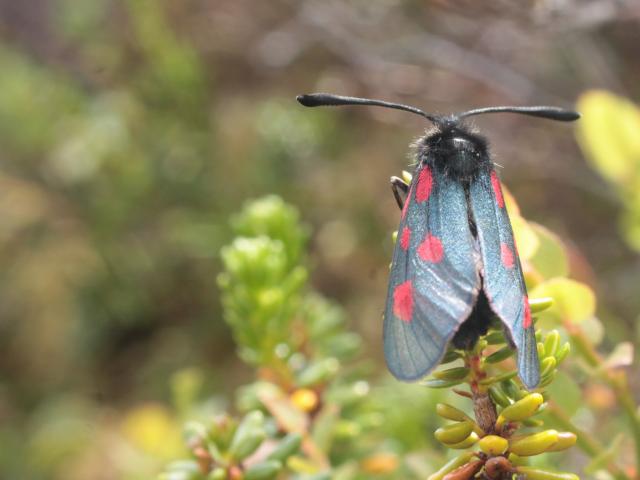
This month we’ve released the results of a new report on moths in Scotland in partnership with NatureScot. Written by Emily Dennis, Senior Ecological Statistician, and Nigel Bourn, Chief Scientist, of Butterfly Conservation, the report shows that moth numbers have worryingly continued to decline over the long them whilst their distribution has increased.
The report presents updated indicators for moths in Scotland, based on trends for 290 moth species, produced using 1.4 million records submitted by volunteers and collated in the National Moth Recording Scheme, as well as standardized monitoring data from the Rothamsted Insect Survey.
On average, moth abundance has fallen by 46% since 1990, with almost five times as many species ‘significantly deceasing’ than ‘significantly increasing’. Shorter-term trends suggest that this decline continues to deepen, with a 25% decrease for 2009-2018. In contrast, moth occupancy, or the distribution of moths in Scotland, has increased by 16% between 1990 and 2016, with more species ‘significantly increasing’ than ‘significantly decreasing’ in their distribution.
Differences between species’ changes in abundance and distribution may be explained by various factors, for example climate change may be driving the range expansion of some species, whilst negative impacts from land management and habitat changes, as well as climate change, may be driving population declines.
These species trends and indicators play an important role in measuring how moths in Scotland are faring, but are based upon our more common and widespread species, whereas some of our most rare and threatened species are currently underrepresented due to a lack of sufficient data.
To help fill this gap, Butterfly Conservation is undertaking a new program of work to improve the monitoring of rare moths in Scotland and better understand how to help these species in future. This includes training local volunteers to monitor Mountain Burnet, a species that only occurs in the UK at a handful of sites near Braemar, as well as other solely Scottish species including Netted Mountain Moth and Choreutis diana, the latter being entirely restricted to Glen Affric. This will be a great opportunity to get out into some of Scotland’s finest scenery and see some of the best moths it has to offer.

You can read the full report online on the NatureScot website.
For more information and to get involved please contact [email protected].

